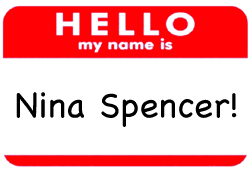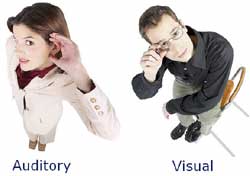An important trait for enhancing workplace rapport and trust
(excerpted and modified from Nina’s book, Getting Passion Out of Your Profession: How to keep loving your living…come what may)
I told my psychiatrist that everyone hates me.
He said I was being ridiculous–everyone hasn’t met me yet.— Rodney Dangerfield
How likeable are you? What is your charisma count? What evidence can you cite to confirm your response to these questions? Do you possibly suffer from “Dangerfielditis”? Or, how about that old Girl Guides and Boy Scouts song, “Nobody likes me, everybody hates me, I’m going to the garden to eat worms…(yum yum)”? George Bernard Shaw declared, “In the right key anything can be said. In the wrong key, nothing”. Think of the charmed workplace colleagues you know who get away with comments that are eyebrow rising or provocative, with a twinkle in their eye and a curl on their lips, while others remain smiling and affectionately engaged. There’s one in every workplace, isn’t there? and in every family and in every group of friends, too! You’ve probably just said their name silently or even aloud, right now. How do they get away with it??? A high charisma count is probably the answer.
“Charisma”, according to the Oxford English Dictionary, is, “the ability to inspire others with devotion and enthusiasm…to radiate an attractive aura…and exhibit great charm”. How are you doing in this department? Charisma can make the difference in how you’re received both internally with colleagues and externally with clients. Your personal influence–your charisma–can have as much to do with the end results of your messages, instructions, requests and directions, as with your positional power. To some extent, projecting charisma can’t be taught; it has to be learned and demonstrated by heart, from the inside out. However, there are ways to increase rapport and trust with those whom you interact that raise your charisma count (remembering these ways only work if you exercise and demonstrate with authenticity and sincere intent).
Here are 12 suggestions for improving your charisma count:
1. Remember people’s names, and use them in conversation. Don’t let yourself off the hook with that tired old excuse, “Oh, I’m just terrible with names”. Figure out a way to get better at it. Fast. Make a game of it, if you must. Use rhymes (in your head, of course), or some other triggering link–do they have the same name as someone else you know, or someone famous that you’ll remember?
2. If you find yourself giving a formal presentation, and someone from the audience asks you a question, echo back that person’s exact words and use the metaphors they used to illustrate their points. People understand and relate to your answers best if you echo their precise words. Every bird likes to hear its own song.
3. Thank people sincerely and in various ways. In North America (and in many parts of Europe and beyond, too), October and November are the two biggest months for the giving of formal thanks (eg. Canadian and American Thanksgiving). Giving thanks at work can take a mere two minutes, eg. to write a thank-you card with three or four sentences in it; and even less if you prefer email). Can you find one extra set of two minutes a day to write one thank-you note, or even leave one voice mail of appreciation for just one well deserving person? Bet you can.
4. Smile. Smile often. I’ve noticed that most people don’t walk around with a smile on their face, but if I smile first, nine times out of ten, they smile back! I first started experimenting with this when I was still in high school, when I was inspired by this age-old passage:
A smile costs nothing, but it creates much.
It enriches those who receive it without impoverishing those who give it.
It happens in a flash, and the memory of it may last forever.
None are so rich that they can get along without it,
and none so poor that they cannot be richer for its benefits.
It creates happiness in the home, fosters goodwill in business
and is the countersign of friendship.It is rest to the weary, daylight to the discouraged, sunshine to the sad,
and is nature’s best antidote for trouble.
Yet it cannot be begged, bought, borrowed or stolen,
for it is something that is worth noting to anyone until it is given away.
In the course of the day, some of your acquaintances
(and I’ll add “colleagues, clients or customers, too”)
may be too tired to give you a smile.
Give them one of yours.
Nobody needs a smile so much as those who have none left to give.— Anonymous
5. Don’t just look at colleagues, clients, managers, directors, etc. …actually see them! When you meet someone new (at work or elsewhere, for that matter), make sure you look long enough to note the colour of that person’s eyes. Much of the time we look at each other, in professional and in personal situations, without truly seeing the other. When you sincerely look at and see another, there is a natural twinkle in your eye that may automatically elevate your charisma count.
6. When dealing with a difficult or closed colleague or client, maintain your kind and warm professionalism at all times…come what may. Try thinking the following as you deal with said difficult person: “I respect you and I acknowledge you, even if I don’t understand you.” Reminding yourself of this, and sincerely believing it, will usually cause the other to intuitively realize that you’re open to them, no matter what. They’ll see it in your facial expression. This strategy may work wonders in a heated debate over a delicate issue during a strained workplace meeting.
7. When in a conversation, observe the other’s body language and subtly mirror it back. Sometimes we don’t know why we instantly like a particular person, but when it comes right down to it, it’s often because they move and talk as we do. That feels safe and comfortable and so we open up. If you want the other person to be more open, make sure that you’re consciously aware of the body language you transmit. Uncross your arms, examine your body orientation compared to theirs. Are you shoulder-to-shoulder during your conversation or squarely face-to-face? Your choice of body orientation may vary depending with whom you’re speaking (a friend, a client, your biggest “boss”, a man or a woman). According to author Dr. Pat Heim, in her video, Invisible Rules: Men, Women and Teams, and also in her book (with Susan Golant), Hardball for Women: Winning at the game of business, when communicating in a gregarious fashion men have a strong preference for speaking with other men in a shoulder-to-shoulder style, while women prefer to be square on. This works fine when speaking with one’s own gender but gets a little tricky when one gender is engaging another. Dr. Heim says that whether we realize it or not, often-times when speaking with the opposite sex one or both of the parties are trying to get the communicating body orientation “fixed up”, eg. a woman may consciously or unconsciously feel that a shoulder-to-shoulder chat at the workplace water cooler with a male counterpart is too cool, impersonal or unfriendly, and so shuffles her feet to talk with the man squarely. In subconscious “male culture”, a standing, square-on conversation with another male is usually reserved for disagreement or confrontation (which is why you so often see this scenario on the cover of sports magazines–coaches squarely facing referees, yelling their heads off at each other!). Do you get this dynamic? The woman shuffles her feet to get square with the man with whom she’s speaking; and then, in response to the discomfort of the square orientation, the man shuffles his feet to re-establish the more comfortable shoulder-to-shoulder/”buddy” body orientation. Both parties end up going around in literal circles trying to get things “fixed up”! Dr. Heim’s suggestion for curing this body orientation dilemma is “stay planted”, regardless of your gender. Understand and be aware of the subtle communicative challenges around body language. Make it easier for the other guy by standing still and letting him or her establish the body orientation that will exist between the two of you while you talk. For another incredibly well-researched, insightful and even funny look at the topic and challenge of communication between the sexes, I also highly recommend Barbara and Allan Pease’s book, Why Men Don’t Listen and Women Can’t Read Maps: How we’re different and what to do about it.
8. Consciously observe others’ preferred learning style…is it auditory, visual or hands on? People’s word choices will help you figure this one out, eg. “I hear you”, “I see what you mean”, “Describe how it works”. Once identified, mirror back the learning style that the other has unconsciously telegraphed to you. Delivering your message in the other’s preferred style charismatically helps get your point across.
9. Practice your voice inflection. Remember that old saying, “It’s not what you said, it’s how you said it?” There may be more times than you’ve ever imagined when you’ve used a tone of voice that has either mildly or seriously offended another. Agree? Practice conscious tone of voice daily.
10. Be a chameleon when communicating by voicemail or email. Some people like a little small talk before getting down to business; others stay on task and immediately get to the point. When the other starts the communication cycle using their own style (provided it’s professionally acceptable enough, even if it’s not quite your style), or when you’re especially desirous of building a relationship with that individual, communicate the way they do. Sometimes this will go against your natural inclination, but if you can stomach it, it will help the other person relate to you and elevate your charisma count in their eyes.
11. Self Disclose. Share personal anecdotes that relate to the point you’re addressing. They make you seem more three-dimensional…more real and invites others to do the same. It makes others laugh, and when we laugh together often, a relationship naturally grows.
12. Pay attention to the disclosures your colleagues and clients share (make either clear mental or literal notes to help your recollection). For example, I learned that one of my clients had a sick puppy and didn’t have a vet because she was new to Toronto. I recommended mine. Her puppy recovered, and now, every once in a while we bump into each other at the vet’s! Another was on the brink of becoming a grandparent for the 20th time (that seemed pretty remarkable to me), and yet another turned out to be my brother-in-law’s brother!
Developing rapport, likeability and charisma goes a long way to performing your job well and can help you through all kinds of unexpected situations. Developing your charisma count and likeability factor with colleagues and clients isn’t necessarily a natural gift, as some may argue–it’s often a learned skill that, as a professional, you can master. It’s not what you get from it…it’s how much further you can go, or how much more effective the two of you can be together, because of it. Rapport and likeability are the prerequisites for establishing trust. Developing the magic of your personal brand of sincere charisma is the icing on the cake. Once others trust you–as their guide, manager, friend, mentor, subject-matter expert or whatever–the heavens open. And that’s the big win for everyone concerned!
It is absurd to divide people into good and bad.
People are either charismatic or tedious.— Oscar Wilde
Charisma is the quality in others that makes us more satisfied with ourselves.
— Henri Frédéric Amiel
Charisma:
a way of getting the answer “yes”, without having asked any clear question.— Albert Camus, The Fall, 1956














